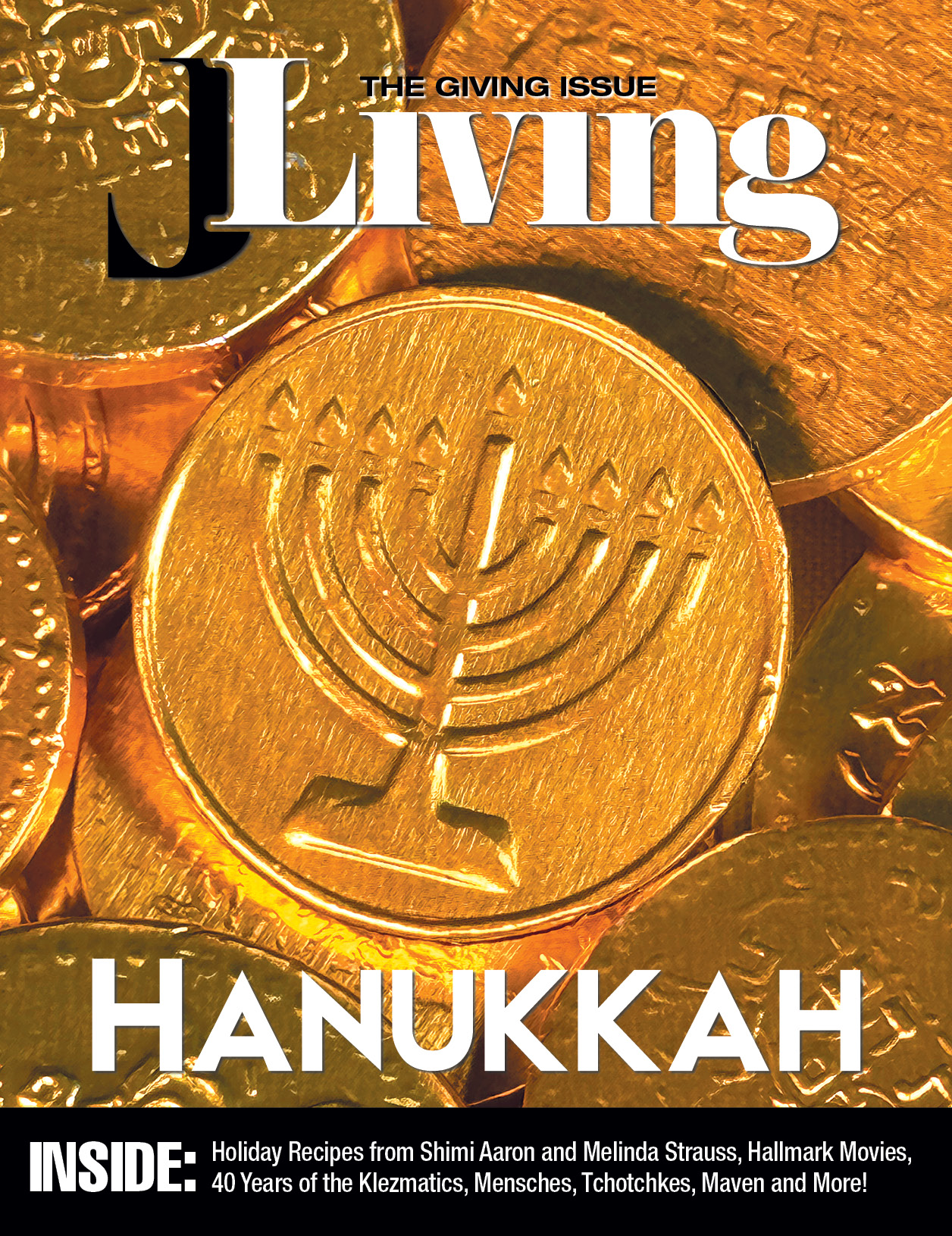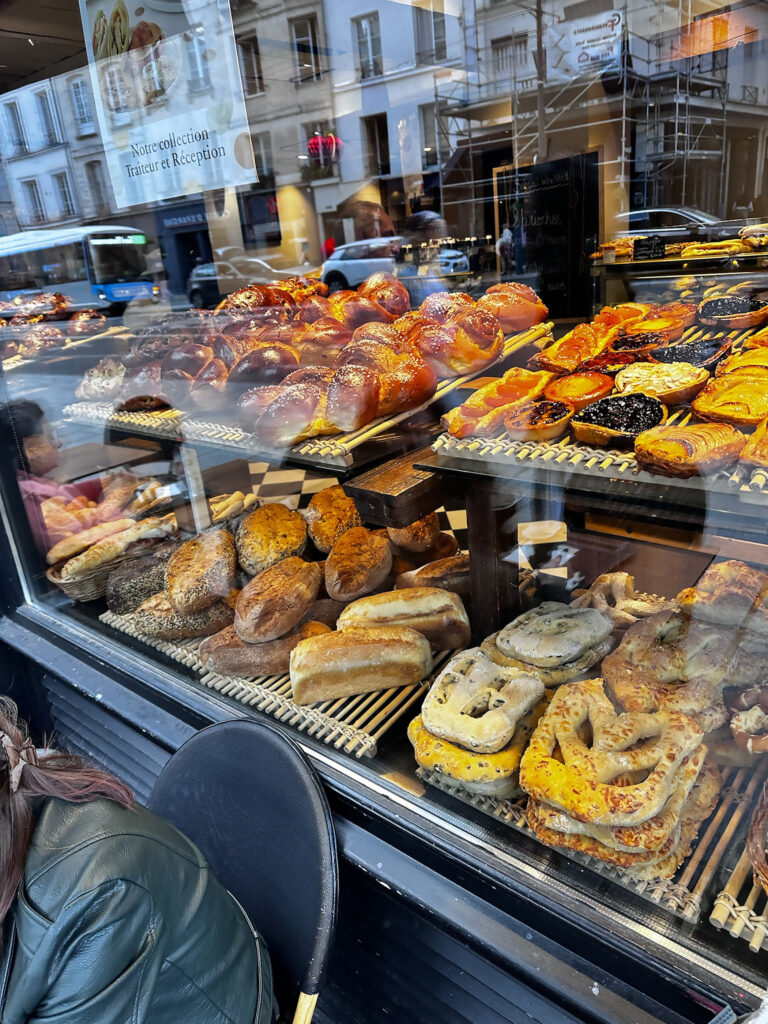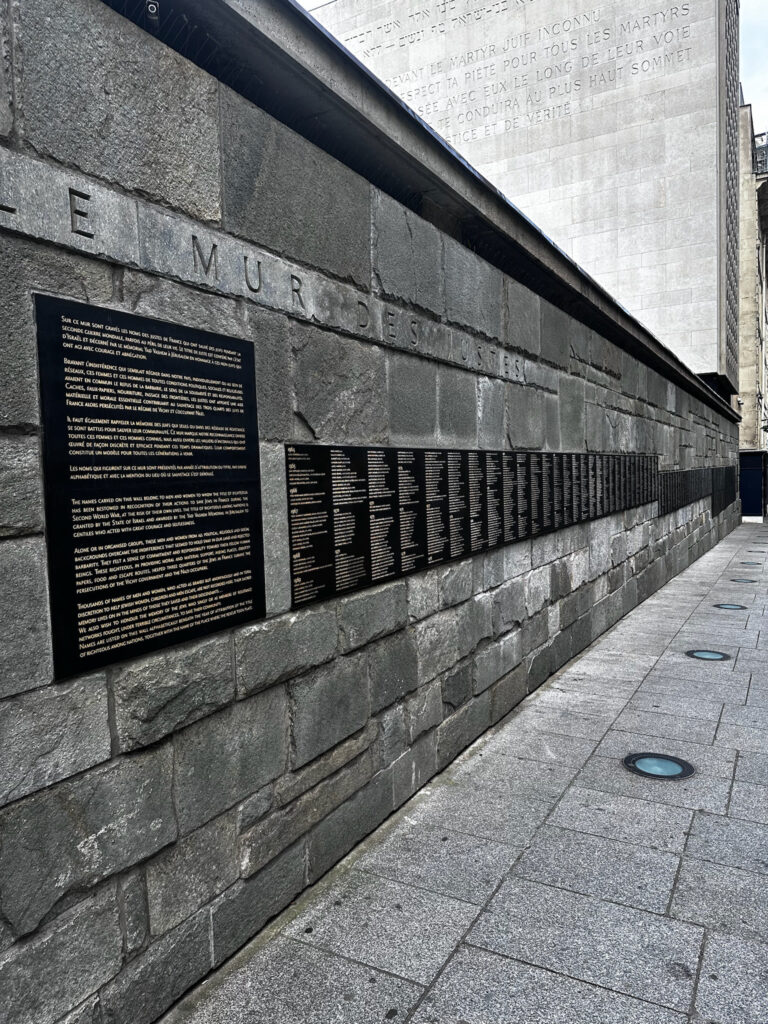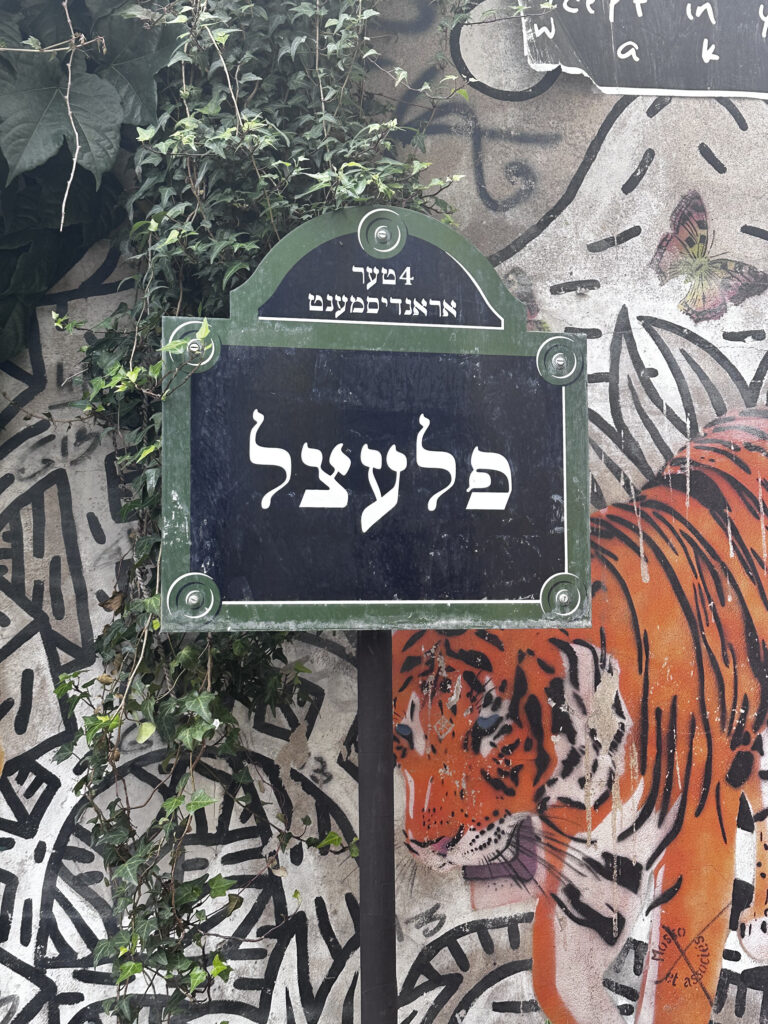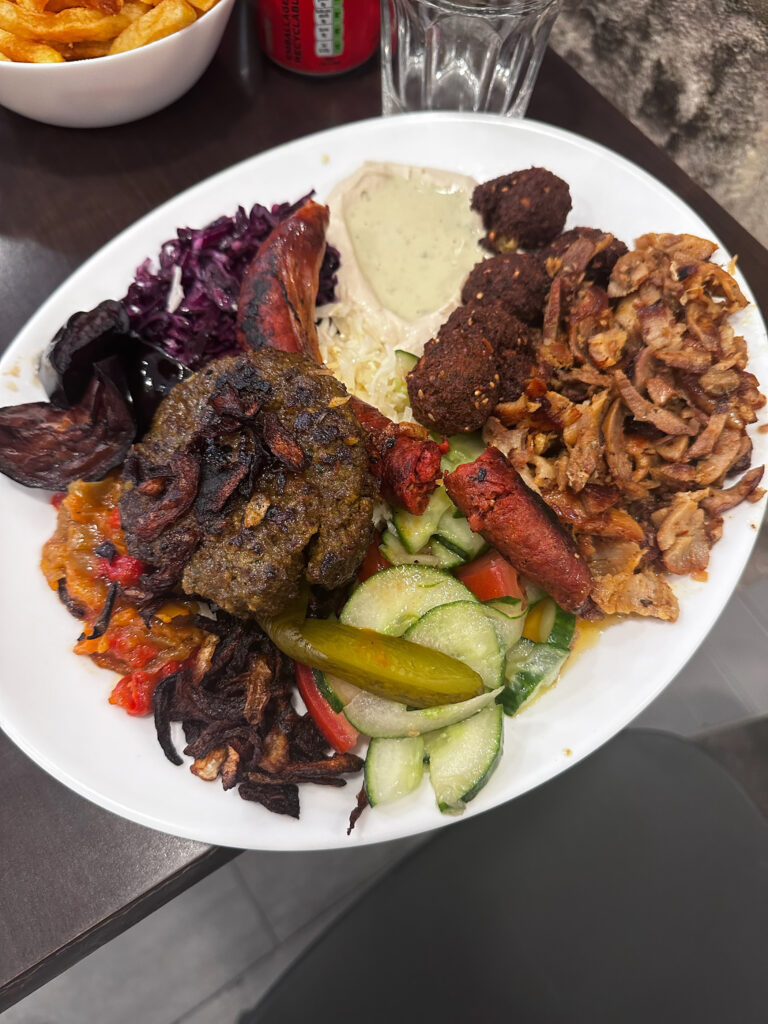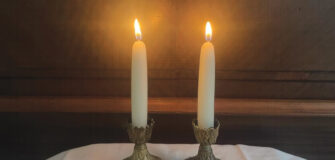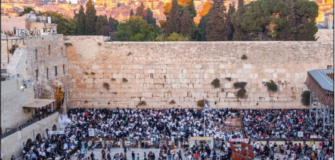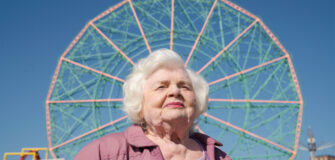Le Marais – A Trip through the Jewish Quarter
As with all things in France, travel starts with your appetite, and a trip to the old Jewish quarter is no different. As you stroll through the small streets and alleys, you pass a number of falafel stands, kosher restaurants and bakeries with their windows lined with challah breads ready for sale. We closed our eyes and wondered: What was this area like years ago?
Le Marais — which literally means a swamp — has been a home to the Jews since the Middle Ages. The early inhabitants of the area were farmers, clerics and religious outcasts, including the Jews and the Templars. In the 13th and 14th centuries, the Jews and Templars were expelled from France, and the neighborhood was brought within the city walls and became a home full of mansions built for Royalty, their families or their mistresses. By the 17th century, Le Marais was the peak of aristocracy, filled with lords and nobles in mansions, coupled with luxurious hotels and parks.
Then the revolution! At the time, around three quarters of France’s 40,000 Jews lived in Alsace and Lorraine and were known as the “German Jews,” while the majority of the rest lived in Bordeaux and Bayonne and were known as the “Portuguese Jews.” A small number of Jews lived in Avignon and the Comtat Venaissin under the control of the Papal States, and they were known as the “Pope’s Jews.” Only a small number from these communities lived in Paris. In 1791, after trials and tribulations, Jews were granted French citizenship, and the neighborhood of Le Marais fell into decline as the rich left or were forced out of town. Mansions were sold or looted as the city became an impoverished home of craftsmen and wholesalers.
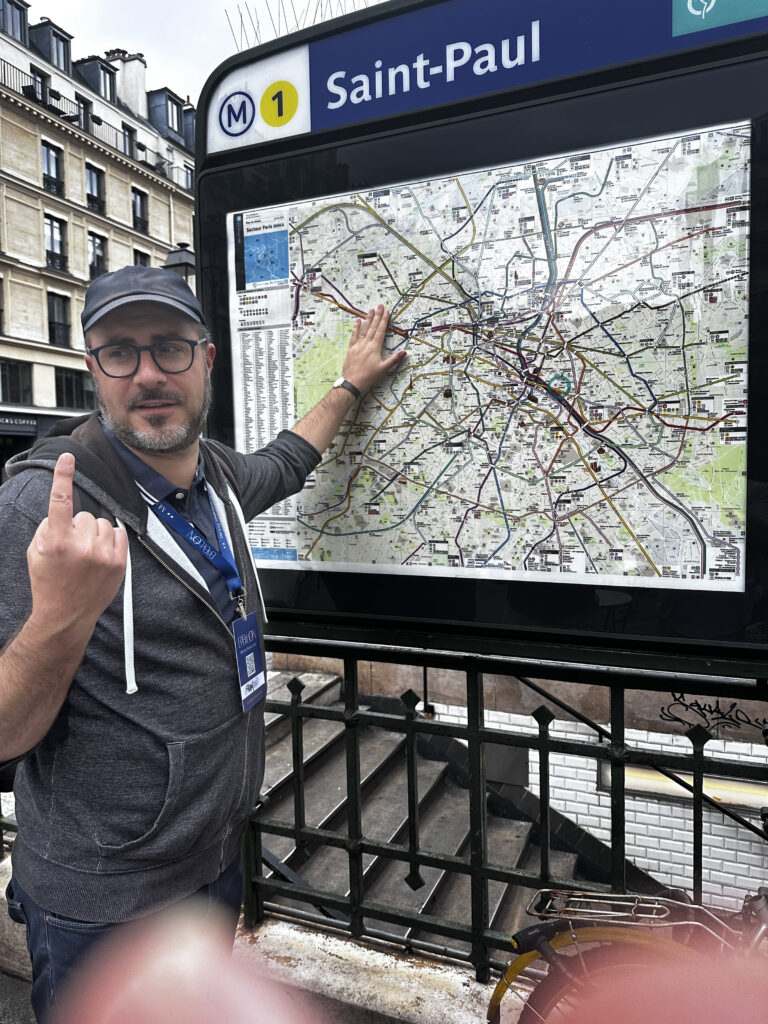
Walking through the narrow streets and alleys, you can glimpse fragments of the past. Large doors, once entrances to gardens and mansions, now serve as storefronts leading to multi-unit homes. While most buildings have been renovated, a few still feature old wooden beams, serving as markers from a long time ago.
French Jews flourished in the 1800s, or at least life got a lot better than it had been in the past. A Jewish middle class was created and thrived in new careers, social status and political power. Still, the undercurrent of antisemitism was never that far away. But throughout this time, France gained a reputation as a haven for the Jews, and in the 1880s the Jews started to immigrate in large numbers to Le Marais, which became known in Yiddish as the “Pletzl” (little square). From 1880 to 1939, around 110,000 Jewish immigrants from Eastern and Central Europe arrived in Paris, and a large number of them settled in Le Marais, where they had family and friends and a familiar Jewish life.
As we walked along, we passed one of many markers. One by the door of a school read, “In memory of the little children of this nursery school deported from 1942 to 1944 because they were new Jews, innocent victims of Nazi barbarity with the active complicity of the Vichy government. They were exterminated in the death camps. Let’s not forget them.”
According to French historian and Nazi hunter Serge Klarsfeld, at the start of the war, there were approximately 320,000 Jews in France. Within months of France’s armistice with Germany, the French required Jews to register with the police, creating files that would later be used to help deport them. Many Jews were able to flee to more rural areas, especially to Southern France. But 77,000 Jews were deported, most to their death.
A visit to Le Marais is not complete without a stop at the Memorial de la Shoah. As you enter the museum there, you walk by the Wall of the Righteous, listing 3,900 people who risked their lives to protect Jews and were awarded the honored designation from the State of Israel and Yad Vashem. The centerpiece inside the museum is a door from the Beaune-la-Rolande internment camp looming over the tomb where the ashes of the victims from various death camps and the Warsaw Ghetto are buried in dirt imported from Israel. There is also a small room filled with the “Jewish Files,” drawers stuffed with files of the Jews who were forced to register with the state.
Images from Le Marias including a bakery, old Parisian architecture, the Wall of the Righteous, and a café with Yiddish specialties including strudels, herring and borekas!. Photos by David Nemet
Much like the markers by the school, a unique project by the museum and street artist Christian Guémy known simply as C215 still remains in the district. Right across the street from the museum, C215 painted the face of Simone Veil on a mailbox to honor the Jewish politician. Simone’s name reigns strongly as the French talk about Jewish perseverance.
In 1944, at the age of 16, Simone was deported to Auschwitz, and heeding the advice of another inmate, she lied about her age to avoid being sent straight to the gas chambers. After being liberated, she returned to France without her parents and sister, who perished. She went on to study law, got married, and had three sons. After taking some time off, she returned to law and politics, with a focus on improving women’s rights, and she is credited with being a champion in legalizing abortion.
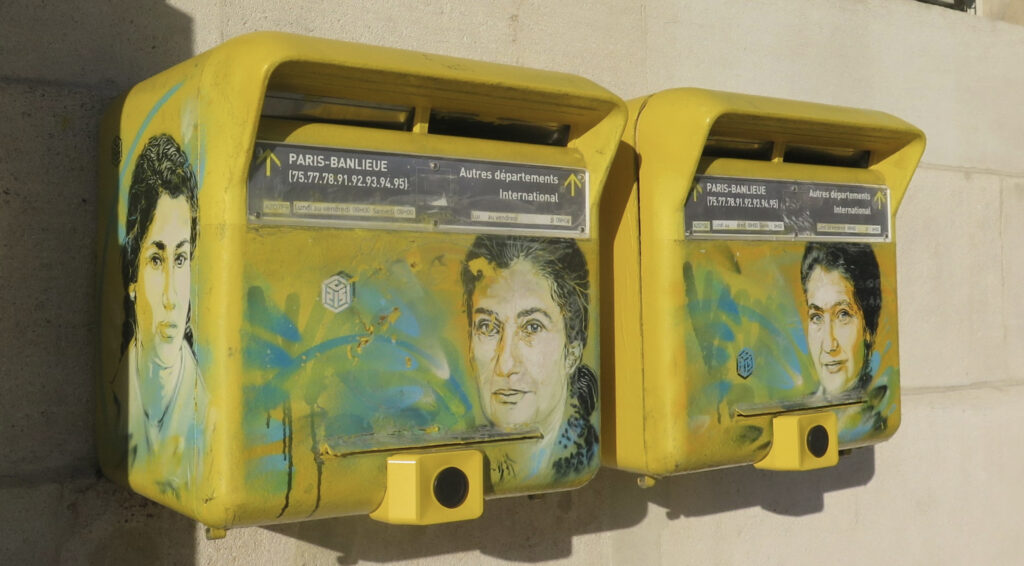
Simone later became the president of the European parliament. Her storied career earned her election into the Académie Française, becoming only the sixth woman to join the “immortals” who preside over the French language. Simone died in 2017 at the age of 89 and was buried in the Panthéon. Established in 1791, the Panthéon honored the Great Men until 1955, when Marie Curie became the first woman to be included on her own merit. Simone became just the fourth woman to be included among the 72 men honored.
At Simone Veil’s funeral, French President Emmanuel Macron noted her Jewish roots, stating, “In Simone Veil, at last, the memory of those racial deportees, as she herself said, those 78,500 Jews and gypsies deported from France, enters [the Panthéon] and lives in this place.”
As the image of Simone resonated with locals, the museum looked to C215 for a larger marketing campaign. As they stated: “To extend this work, the Memorial wanted to give him carte blanche by associating his talent as a street artist with the remainder of the historic events that took place in the streets of Paris on July 16 and 17, 1942.” The street art was to remember the 80th anniversary of the Vel d’Hiv roundup, a day in which over 13,000 Jews — including 4,000 children — were arrested in the largest deportation from France during the war, a majority of whom went to Auschwitz. The exhibition, known as: “11,400 Children. Portraits by C215,” involved painting eight mailboxes with the images of 14 of the 11,400 children who were deported. Today the mailboxes still have the art, a little worn and often updated, as a powerful reminder.
Steet sign and a large mixed grill falafel plate in Le Marais. Photos by David Nemetz
Walking through Le Marais today only allows you to see a small glimmer of what was. It is now a testament to urban revival, a neighborhood with a long past. In the 1960s, this densely populated neighborhood was practically a slum, with 30% of the residences not having running water, 60% not having individual bathrooms and 10% without electricity.
In 1962, the area was recognized as a secteur sauvegardé, a designation given to an urban area of heritage value specially protected by French legislation. The neighborhood was put on a path of gentrification by protecting the heritage, improving the infrastructure and lowering the population density. The results are a haven for locals and tourists as the area is now filled with hip cafes, art galleries and posh stores. Just look carefully and you’ll find a Jewish relic or bookstore still standing and, of course, a good falafel.

